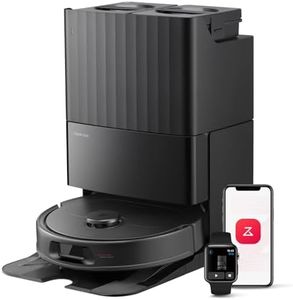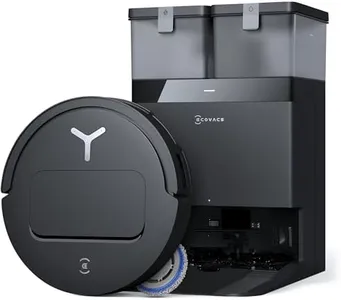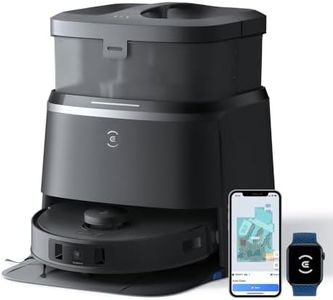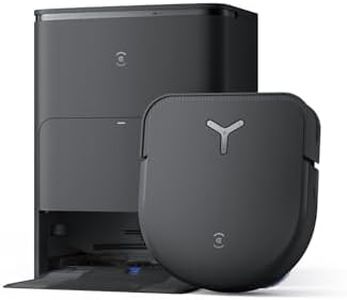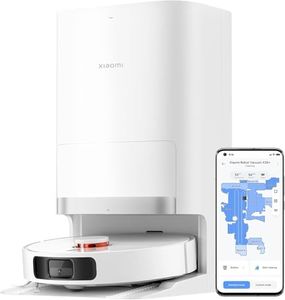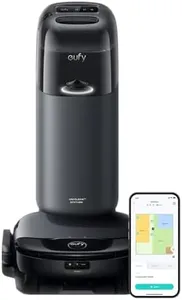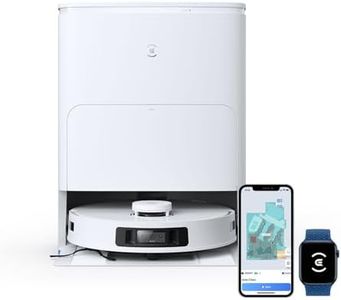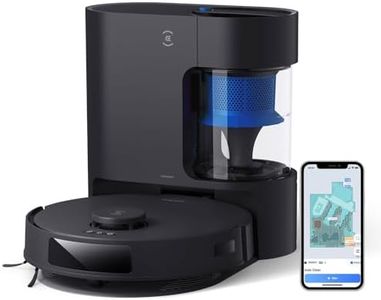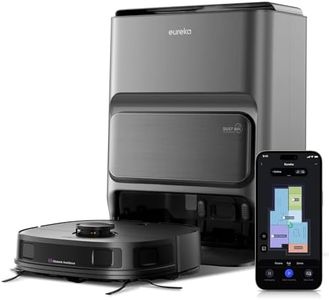We Use CookiesWe use cookies to enhance the security, performance,
functionality and for analytical and promotional activities. By continuing to browse this site you
are agreeing to our privacy policy
10 Best Budget Robotic Vacuums
From leading brands and best sellers available on the web.Buying Guide for the Best Budget Robotic Vacuums
When shopping for a budget-friendly robotic vacuum, it's important to strike a balance between affordability and essential features. You'll want a machine that effectively keeps your home tidy without overcomplicating things or skimping on quality. Think about the size of your space, your floor type, how much supervision you want to give the device, and what specific cleaning challenges you face—like pet hair or large debris. By understanding the key specifications, you can match a robot vacuum's strengths to your lifestyle and living environment.Suction PowerSuction power refers to how effectively the vacuum can pick up dirt, dust, and debris from your floor. This is usually measured in Pascals (Pa), and it's important because stronger suction means better cleaning results—especially on carpets or for picking up heavier debris. Lower suction models (around 1000 Pa or less) are fine for light dust on hard floors, medium suction (around 1500–2000 Pa) works for most mixed floors and light carpets, and higher suction (over 2000 Pa) is best for thicker carpets or homes with lots of pet hair. If your home is mostly tile, laminate, or hardwood with minimal mess, a basic suction level will suffice, but those with pets, children, or more carpet will benefit from higher suction.
Battery LifeBattery life determines how long a robot vacuum can clean before needing to recharge. It's typically measured in minutes of runtime. Around 60 to 90 minutes is good for small apartments, 90 to 120 minutes suits medium-sized spaces, and 120 minutes or more is better for large homes. Choose battery life based on your home's size—if the robot runs out midway through cleaning, it might not finish the job efficiently, or you may need to restart it frequently.
Navigation SystemThe navigation system is how the robot finds its way and avoids obstacles. Basic models usually move in random patterns and may bump into furniture, which is fine for open or simple spaces. More advanced models have sensors or simple mapping to clean in straight lines and avoid getting stuck, making them better for homes with lots of furniture or tight spaces. Think about how cluttered your rooms are—if you have lots of chairs, cables, or things on the floor, improved navigation will save you frustration and time.
Bin CapacityBin capacity is the amount of dirt and debris the robot can hold before it needs to be emptied. Smaller bins (under 0.4 liters) fill up quickly and are suited for frequent light cleanings in small homes, while larger bins (0.4 liters or more) are better for bigger areas or households with pets that shed a lot. If you don't want to empty the bin very often, or if you have bigger messes, look for a larger bin.
Height/ClearanceThe height or clearance is how tall the vacuum is, which affects where it can fit and clean. Lower profile robots (under 3 inches) can slip under more furniture like couches and beds, while taller machines may miss these spots. For homes with lots of low-clearance furniture, a thinner robot is a smart choice.
Scheduled CleaningScheduled cleaning is the ability to set the vacuum to automatically start at certain times. This feature matters if you want your floors cleaned while you're out or asleep, removing the need to remember to start the robot. Some robots use simple physical buttons, and others can be programmed through an app. If you have a regular routine, scheduling makes maintenance even easier.
Noise LevelNoise level, typically measured in decibels (dB), tells you how loud the vacuum is when operating. Quieter models (under 60 dB) are less likely to disturb you while you relax or work, while louder ones (above 65 dB) might be more disruptive. If you’re often home and sensitive to noise, opt for a quieter robot.
